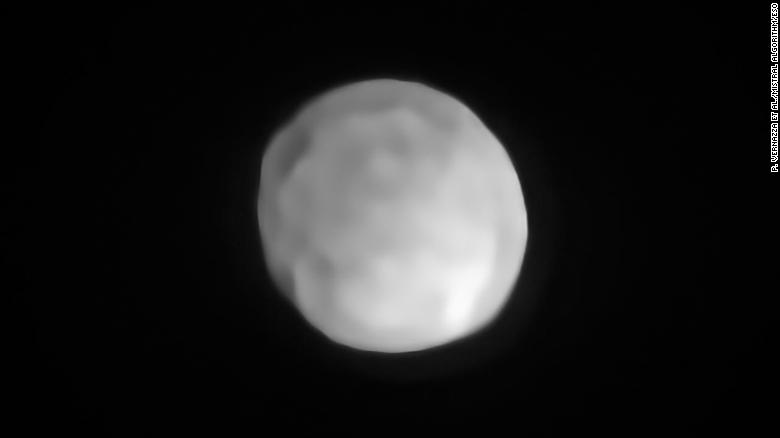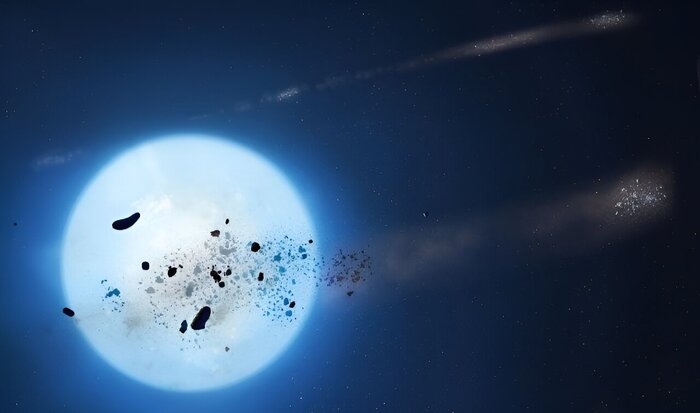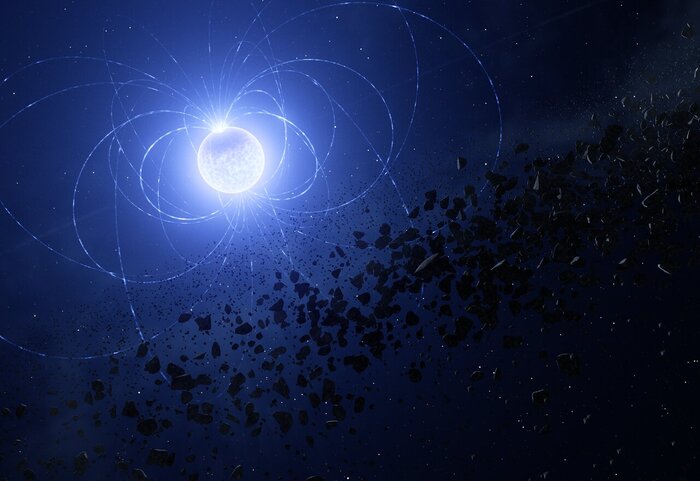- Click to share on Facebook (Opens in a new window)
- Click to share on Twitter (Opens in a new window)
- Click here to share on LinkedIn (Opens in a new window)
- Click to email a friend (Opens in a new window)
(CNN) - A huge asteroid could be reclassified as a dwarf planet, which could make it the smallest in the solar system, after new research revealed its shape, astronomers said Monday.
Located in the asteroid belt between Mars and Jupiter is an object that may have been overlooked. They believe that the asteroid Hygiea should be classified as a dwarf planet.
There are not many dwarf planets in our solar system. The five planets classified as dwarves include Pluto (although some still consider him the ninth planet), Ceres in the asteroid belt, Makemake, Haumea and Eris.
Pluto is the most famous of the dwarf planets, long considered the ninth planet of our solar system until it was degraded in 2006, when the International Astronomical Union created a new definition of planets and decided that Pluto did not conform to the law.
Hygiea is the fourth largest object in the asteroid belt behind Ceres, Vesta and Pallas. Vesta and Pallas are large asteroids. But the new images and data provided by the SPHERE instrument of the European Southern Observatory in the Very Large Telescope (VLT) have shown that Hygiea is spherical.
This is the first time that astronomers have been able to study the surface, shape and size of Hygiea in high resolution. If it is considered a dwarf planet, Hygiea would become the smallest dwarf planet in our solar system. The study was published Monday in the journal Nature Astronomy.
To be classified as a dwarf planet, a celestial body must meet certain criteria. It must orbit the Sun and it must not be a moon.
In addition to this, it should not "clear the neighborhood" around its orbit like a planet does, and it must have been molded by its own gravity into a round or almost round shape.
Hygiea marks many of those boxes.
READ : They discover a dwarf planet that takes 700 years to go around the Sun
"Thanks to the unique ability of the SPHERE instrument in the VLT, which is one of the most powerful imaging systems in the world, we were able to solve the shape of Hygiea, which turns out to be almost spherical," said principal investigator Pierre Vernazza del Laboratoire d'Astrophysique de Marseille in France.
"Thanks to these images, Hygiea can be reclassified as a dwarf planet, so far the smallest in the Solar System," he added.
The new observations helped astronomers determine that Hygiea has a diameter of 430 km. As a reference, Ceres is 950 km in diameter and Pluto is 2,400 km in diameter.
Astronomers did not expect this when they turned their telescope to study Hygiea. Instead, they hoped to find a large impact crater. Hygiea belongs to a large family of asteroids in the asteroid belt, where 7,000 different asteroids come from the same body that was once much larger. But Hygiea doesn't show the revealing brand.
Instead, they only saw two craters that do not match the mark.
"This result was a real surprise, as we expected the presence of a large impact basin, as is the case with Vesta," Vernazza said.
“Neither of these two craters could have been caused by the impact caused by the Hygiea asteroid family, whose volume is comparable to that of a 100 km object. They are too small, ”said Miroslav Brož, co-author of the study at the Astronomical Institute of Charles University in Prague, Czech Republic.
This means that Hygiea has a different origin story than expected. Based on their data, astronomers were able to simulate the theory that Hygiea and her asteroid companions are the result of a large frontal collision some 2,000 million years ago. A projectile between 74 and 150 km in diameter erased the mother object. Hygiea separated from the leftover pieces and everything else became thousands of asteroids around Hygiea.
"Such a collision between two large bodies in the asteroid belt is unique in the last 3,000 to 4,000 million years," said Pavel Ševeček, co-author of the study and PhD student at the Astronomical Institute of the University of Charles.
READ : This is the closest solar system to Earth that contains multiple planets
Without powerful telescopes like the one used in this study, astronomers would not know these finer details of our solar system.
"Thanks to the VLT and the new generation adaptive optics instrument SPHERE, we are now forming images of the asteroids of the main belt with unprecedented resolution, closing the gap between observations of terrestrial and interplanetary missions," Vernazza said.
Planet








